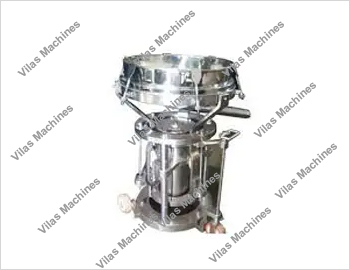A mechanical sifter, also known as a sieve or a vibrating screen, is a device used to separate, classify, and sort particles or materials based on their size or composition. The specific content of a mechanical sifter can vary depending on its design, purpose, and the materials it is intended to handle. However, I can provide you with a general overview of the key components and features commonly found in mechanical sifters:
1. Frame and Housing:
- The frame provides structural support to the sifter, while the housing encloses the sieve components. It is typically made of metal or other durable materials.
2. Sieve Deck:
- The sieve deck is the main screening surface where the material is separated based on size. It consists of a series of mesh or perforated surfaces through which particles pass or are retained.
3. Mesh or Perforated Plate:
- The mesh or perforated plate is the actual filtering surface of the sieve deck. The choice of mesh size or perforation pattern determines the size of particles that can pass through.
4. Vibrating Mechanism:
- Many mechanical sifters incorporate a vibrating mechanism that imparts motion to the sieve deck. This vibration aids in the separation process by promoting the movement of particles through the mesh or perforations.
5.Drive Unit:
- The drive unit provides the power to the vibrating mechanism. It can be an electric motor or another source of mechanical power that generates the necessary vibrations.
6. Screening Surface Tensioning System:
- To ensure proper tension and stability of the mesh or perforated plate, a tensioning system is often included. This system allows for adjustments to maintain the integrity of the screening surface.
7. Feed Inlet and Outlet:
- The sifter has entry and exit points for the material being processed. The feed inlet introduces the material onto the sieve deck, while the outlet allows separated particles to exit.
8. Support Springs or Suspension System:
- Springs or a suspension system are commonly used to isolate the vibrating components from the supporting structure. This helps reduce transmitted vibrations and ensures smooth operation.
9. Clean-Out Doors or Inspection Ports:
- These features provide access to the interior of the sifter for maintenance, cleaning, or inspection.
10. Dust Collection System (Optional):
- In some applications, a dust collection system may be integrated to capture and collect airborne particles generated during the sifting process.

